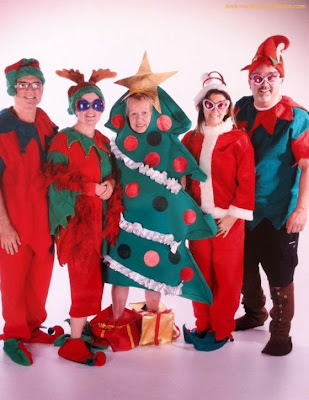 |
| Changing your underwear at midnight is a tradition in many countries. Red if your hoping for love, yellow for money. |
In 1907 Adolph Ochs, who was the publisher of The New York Times, requested the paper’s chief
electrician built a 700-pound ball out of wood and iron. He fitted it
with 100 25-watt light bulbs, and it was lowered from a flagpole atop
One Times Square as midnight hit. Everyone was delighted...of course everyone who saw it had a good buzz on and would be delighted by most anything.
In 1920, the ball was upgraded to a 400-pound model made of wrought iron. The ball-dropping ceremony in Times Square continued uninterrupted
until 1942 when there was no event due to the World War
II-era “dim-out” of the New York City skyline. This lasted 2 years. The Ball returned in 1944.
The iron ball was upgraded again in 1955. This time it was one made from
aluminum, which weighed only 200 pounds. The same aluminum
ball with different sorts of lighting configurations were dropped until
1998.
The ball made the first of what would become a plethora of
changes over the next decade. The 2000 ball was built
by Waterford Crystal, it had a six-foot diameter and weighed 1,070 pounds.
And the spectacle has continued to increase—the 2009 version of the ball
had a 12-foot diameter and weighed more than 11,000 pounds! Despite
the weight, the many lights on the ball had become dynamic and computer
controlled. No longer was the ball a beacon; now it was a
light show. The combination of tradition and technology ushered the
Times Square ball into the second decade of this
century. An improvement I would suggest would be to drop it on Rupert Murdoch's head. But that may be asking too much.
IF you were born and raised in the US, you might think that fireworks and
dropping glass spheres is normal. But
you’re merely used to it. Here are some of the traditions for the
holiday from other spots:In Sao Paulo, Brazil’s largest city, New Year’s Eve is all about lucky underpants. People go for red if they’re looking for love and yellow if they’re after some extra cash.
To celebrate the New Year in Finland people cast molten tin into containers of water and, when the tin hardens, take its perceived shape as an indicator of how the coming year will go. For instance, a heart or ring shape signifies a wedding, and a pig shape (which is a very specific shape to glean from hardened tin, but we digress) stands for lots of food.
Panamanians burn effigies of public figures, called munecos. The idea is the effigies stand for the old year; destroying them leads the way into the new one. We could have some fun with that here. Imagine disfiguring a model of, say, a Yankees pitcher, and then dancing around it, celebrating.
· In Belarus unmarried women participate in a game in which piles of corn are placed in front of each one. A rooster is released, and whichever girl’s corn pile it goes to first will be the first to marry in the coming year. (the entire population of Brazil is looking down at its red underpants and heaving a great sigh of relief).
Spaniards eat 12 grapes as midnight approaches to ensure prosperity over the next 12 months.
Many Danish leap off chairs at midnight, hoping to ban all bad spirits in the new year. They also break dishes. People throw their old dishes on their friends’ doors on New Years and the one with the most dishes outside their door, er...uh,,, has the most friends.
Many Danish leap off chairs at midnight, hoping to ban all bad spirits in the new year. They also break dishes. People throw their old dishes on their friends’ doors on New Years and the one with the most dishes outside their door, er...uh,,, has the most friends.
Germans and Austrians similar to Finland, pour lead as a tradition, this includes using molten lead like tea leaves. The lead pieces are poured into a bowl filled with water, when it hardens, the forms predict what is going to happen in the new year. If the lead forms a ball it means good luck, if it looks like an anchor it means you will need help, and if it’s a cross it means death.
In Ecuador, the New Years fiesta includes all the locals gathering together with pictures that represent something you do not want in the new year from the last year and burning it. This strikes me as a great idea!
In the city of Talca, Chili, people all go visit the graveyard, set up their chairs and
wait for the year to arrive with the dead. (I think I'll pass on this one, though I do appreciate the concept...I'll honor the dead some other night thanks).
Mistletoe leaves are placed under a pillow to get a mate in Ireland.
New Year eve is considered the best time to communicate with the dead spirits in Mexico.
In the Philippines, the wearing of polka dots and eating round things is the norm.
One very strange tradition since 1972 every single year, on midnight Germans watch the British show “Dinner for One.” The origin of the tradition is unknown, but it is so popular that even the punch line “same procedure every year” now is a catch phrase in Germany.
In the Philippines, the wearing of polka dots and eating round things is the norm.
One very strange tradition since 1972 every single year, on midnight Germans watch the British show “Dinner for One.” The origin of the tradition is unknown, but it is so popular that even the punch line “same procedure every year” now is a catch phrase in Germany.
Well no matter how bad you think you may have had it this year,
chances are good you can be thankful your not this guy!






























































